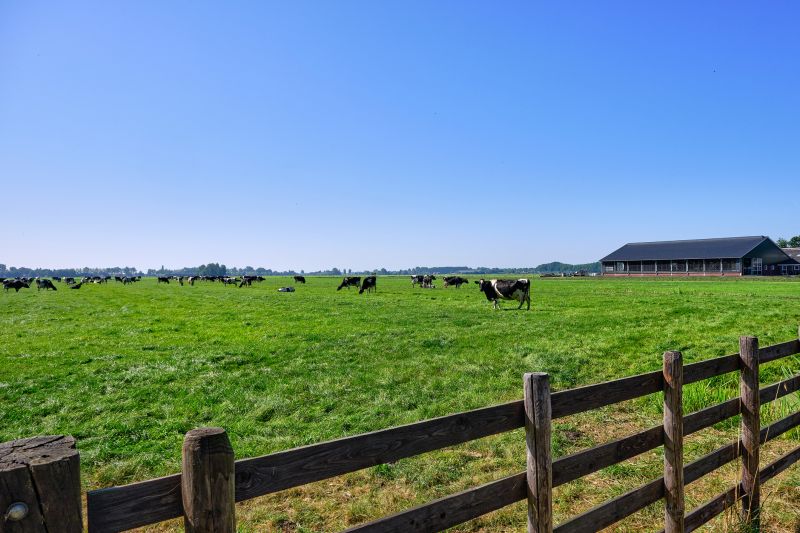Popular Tools And Materials For Efficient Pasture Fence Setup
Discover essential tools and materials that simplify pasture fence installation and improve overall effectiveness.
 Selecting the appropriate products for pasture fence installations is essential for creating a secure and functional enclosure for livestock or other outdoor animals. The right fencing components ensure durability, safety, and ease of maintenance, making the task of setting up or upgrading a pasture more manageable. From sturdy posts to reliable wiring and energizers, a variety of products are available to suit different pasture sizes, terrain types, and specific animal needs.
Selecting the appropriate products for pasture fence installations is essential for creating a secure and functional enclosure for livestock or other outdoor animals. The right fencing components ensure durability, safety, and ease of maintenance, making the task of setting up or upgrading a pasture more manageable. From sturdy posts to reliable wiring and energizers, a variety of products are available to suit different pasture sizes, terrain types, and specific animal needs.
Top Overall Option
Heavy-Duty Electric Fence Energizer
A versatile electric fence energizer designed to deliver reliable pulses to keep livestock contained and secure. Its durable construction and adjustable settings make it suitable for various pasture sizes and types, ensuring consistent performance over time.
Types of Products For Pasture Fence Installations
Wooden Fence Posts
Traditional and sturdy posts that provide a natural aesthetic and strong support for various fencing materials.
Metal T-Posts
Lightweight and easy-to-install metal posts suitable for temporary or permanent fencing solutions.
Wire Fencing
Flexible fencing options including barbed wire, woven wire, or high-tensile wire for secure enclosures.
Electric Fence Wire
Conductive wire designed to work with energizers, providing an electric barrier for livestock containment.
Fence Insulators
Components that prevent grounding of electric wire, ensuring efficient energy transfer.
Tensioners and Strainers
Devices used to maintain proper tension in wire fencing, preventing sagging and ensuring durability.
Gate Hardware
Hinges, latches, and handles designed for secure and easy access points within fencing systems.
Fencing Staples and Clips
Fasteners used to attach wire or mesh to posts securely.
Mesh Fencing
Wire mesh panels or rolls suitable for smaller animals or creating secure enclosures.
Grounding Systems
Components that ensure proper grounding of electric fencing for safety and performance.
Warning Signs
Signs to alert passersby and visitors about electrified fencing for safety compliance.
Post Caps and Protective Covers
Accessories that protect posts and enhance the fencing appearance.
Solar Fencing Kits
Complete solar-powered electric fencing solutions for remote or off-grid pastures.
Popular Choices
A widely used fencing wire known for its strength and flexibility, suitable for various livestock.
A commonly selected energizer compatible with different wire types, providing reliable electric pulses.
Popular for their ease of installation and durability, ideal for temporary or permanent fencing.
A traditional fencing option that offers a physical barrier and deters animals from crossing.
Versatile panels used for small animal enclosures or secure boundaries.
Essential for maintaining proper wire tension, ensuring the longevity of the fence.
Critical for electric fencing systems to prevent grounding and ensure safety.
Secure and easy-to-use latches for pasture gates, facilitating access and security.
Popular for remote pastures, these kits combine solar power with electric fencing components.
Commonly used to complete electric fencing circuits for safety and performance.
Frequently used to alert individuals to electric fencing, enhancing safety awareness.
When considering fencing options, it is important to evaluate the materials used, the installation process, and the longevity of the components. High-quality posts can withstand weather conditions and animal pressure, while fencing wire options provide varying levels of containment depending on the animal species. Accessories such as insulators, tensioners, and connectors contribute to a secure and adjustable fence line, enabling customization and ease of repair.
Proper planning and selection of compatible products can enhance the safety of the animals and reduce ongoing maintenance efforts. Whether installing a new pasture fence or upgrading an existing one, understanding the different product types and their features helps in making informed decisions. It is advisable to consider the specific needs of the livestock, the terrain, and the budget to choose the most suitable fencing solutions.
In addition to the core fencing materials, accessories like warning signs, gates, and grounding equipment can improve the overall functionality and safety of the pasture enclosure. Investing in quality products and proper installation techniques can result in a long-lasting fencing system that provides peace of mind for livestock owners and farm operators alike.
Key Buying Considerations
- Assess the type of livestock or animals to determine the appropriate fencing material and height.
- Evaluate the terrain and environmental conditions to choose durable and weather-resistant components.
- Consider the size of the pasture and the total length of fencing needed for planning purposes.
- Decide between permanent and temporary fencing options based on your management needs.
- Check compatibility of wire, insulators, and energizers to ensure system efficiency.
- Determine if electric fencing is suitable for your animals and if safety signage is required.
- Review installation requirements and whether professional setup or DIY is preferred.
- Account for maintenance and repair needs over the lifespan of the fencing system.
- Estimate your budget and compare the costs of different product types and accessories.
- Look for products with good reviews and reliable performance histories.
- Consider the ease of adding or modifying sections of the fence in the future.
- Ensure that grounding and safety features are included for electric fencing systems.
- Verify local regulations or guidelines related to fencing and electrical safety.
- Evaluate the availability of replacement parts and accessories for ongoing maintenance.
- Think about aesthetic preferences and how the fencing will integrate with the landscape.
